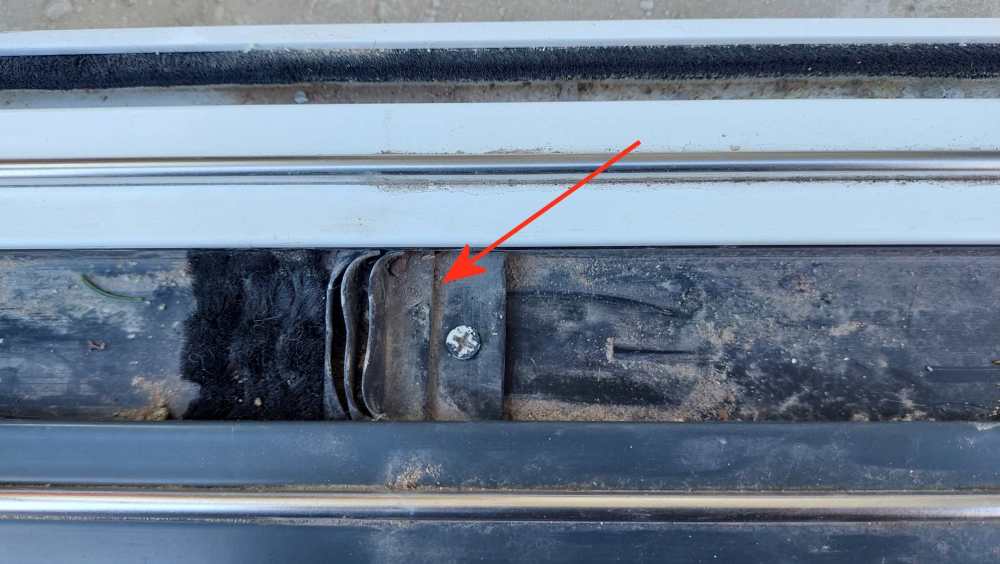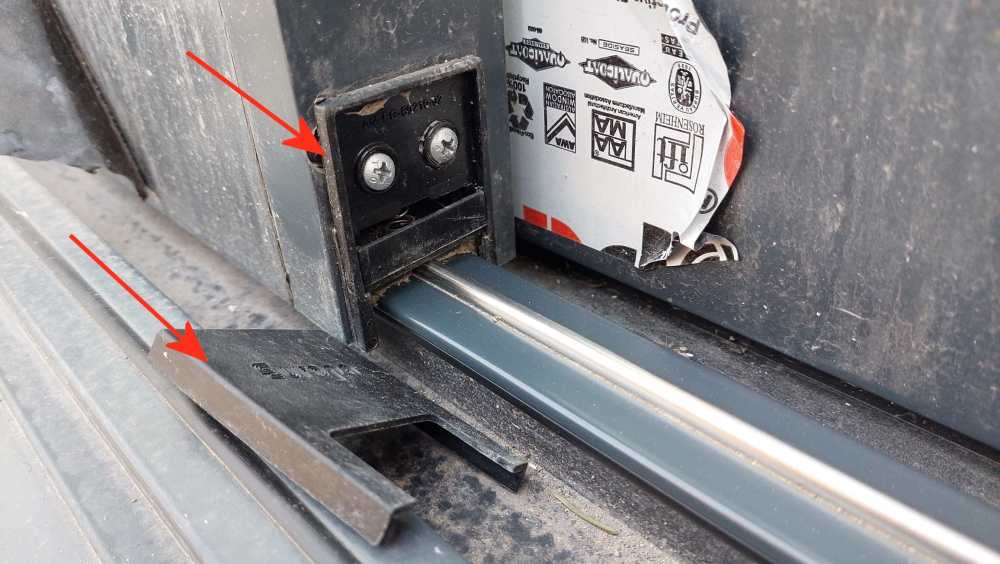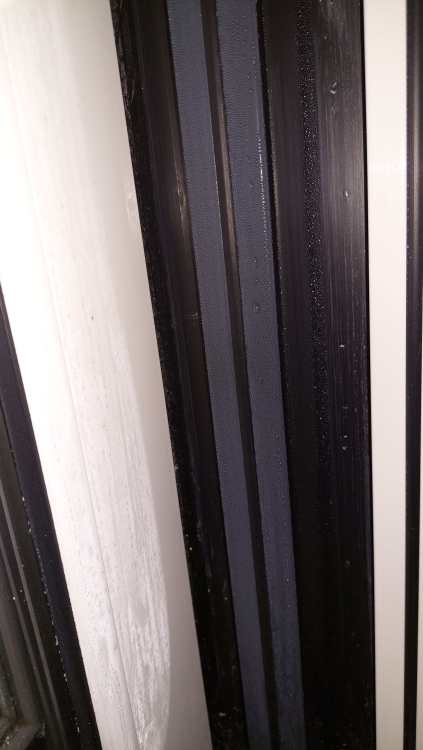-
Posts
7 -
Joined
-
Last visited
Personal Information
-
Location
Midlands
Recent Profile Visitors
The recent visitors block is disabled and is not being shown to other users.
jimbob80's Achievements

New Member (2/5)
0
Reputation
-
I've found the following part number chart: ESS47 Wallchart This suggests the: 1. Draft strip / baffle = is a "Sealing plug" and has part number SR-12717 (or possibly PS-7) 2. Spring assembly and "Europa" cover = is a "Plastic Cap for Interlock" and has part number PG-80210 I checked with Alunet and unfortunately they won't sell spares to retail customers. I did find that they have just been purchased by Eurocell, so maybe they will stock the parts in the future (they didn't yesterday): Eurocell Acquires Alunet Group If anyone can suggest somewhere to buy spares I would be very grateful.
-
We have a large sliding door. I think it is a "Alunet ESS47" profile but I am not certain about this. The door system has two small parts which are causing problems: 1. Draft / Baffle strip - This is under the sliding openers at the point they interface with the outside. Each strip consists of moulded plastic part with a screw hole, a brush approx. 20mmx200mm and 3 or 4 "gills". 2. Spring assembly and "Europa" cover - There is one of these on the top and bottom of each sliding opener. The spring assembly pushes a foam strip against the sliding rail. Presumably, this is to provide further draft proofing whilst also allowing the opener to move. It has an easily removed cover with the brand "Europa" on it. I have attached two pictures to this post. I would be very grateful for any advice on how to identify part numbers and/or purchase spares for these items which look like they will wear quickly and need to be replaced several times during the life of the door system.
-
The frame is 20% of total opening area. The glass is the remainder. Using a weighted average of the two u-values, the composite value is 1.7. This is greater than than the 1.5 value stated in the confirmation email from the supplier and also the value in part L of the building regulations. It seems the product does not (a) meet the building regulations or (b) meet the spec as sold.
- 18 replies
-
- condensation
- windows
-
(and 2 more)
Tagged with:
-
Thank you. That is very helpful. I think I'm fairly clued up on this now but not, by any means, an expert. I could calculate the total composite U-value of the frame and glass. Given the poor frame value, it wouldn't surprise me that this pushes the building regulations. If this was true, I guess I could make a case that the product was mis-sold since it could not comply with the legal requirement for a new build extension. However, who would believe "me"? Wouldn't I need an expert (a surveyor?) to back this up - Is that the profession that covers this type of thing?
- 18 replies
-
- condensation
- windows
-
(and 2 more)
Tagged with:
-
The doors use the "Alunet ESS47 profile". I understand this is quite a common system. It goes without saying that, given my experience, I wouldn't buy it again! Update: Following a protracted discussion with supplier about the best install technique, the installer has returned and amended the installation (without removing the units). The changes were to remove bedding mortar under the cills, add a DPM under the frames (partially present before), re-pack the frames and ensure they were surrounded by nothing but plastic packers and foam. The results have been mixed: 1. Significant improvement on one unit (a window, I didn't mention this in original post to keep things simple) 2. Partial improvement on large sliding door unit - Previously, there was condensation on the metal rail the doors slide on (top and bottom), the "trough" either side of the metal rail, the fixed edge frame (especially at the bottom) and along the bottom of the sliding panels. Following the change, there is no longer condensation along the top metal rail at all and only a small amount in the "trough". Condensation remains on the bottom metal rail and the other areas. Subjectively, the amount of condensation seems slightly less in these areas (but still obvious). Given the partial improvement, I am inclined to say that at least part of the problem was that the original install had bridged the thermal break with mortar. However, following these changes I am confident that there is only packers and foam around the frame. It is no longer in thermal contact with the masonry at any point. The supplier was vague about the purpose of the DPM under the frame. Clearly, it isn't to protect the metal frame from damp. They said it was "standard practice" but weren't able to explain why. The best I could conclude, it may help ensure no direct contact between the frame and the masonry. As suggested, I purchased a thermal camera. The results were very revealing. From the inside, the metal frames are the coldest part of the room (much colder than the glass within them). From the outside, the frames are the hottest part of the building. They glow "red hot" on the camera. In summary, the changes suggested by the supplier have helped a little. However, the fundamental problem remains. When the outside temperature is zero, the bottom edge of the inside frame is around 3 degrees C. This is well below the dew point (at any reasonable temperature and humidity) so it is no surprise that condensation forms there. In the same house, our plastic double glazed frames are around 13 degrees C. I don't think the thermally broken aluminium units are fit for purpose, but others may disagree? Quick questions: 1. Are inside frames at 3 degrees Cor below acceptable (or even within the building regulations)? This must waste a lot of heating energy. 2. Is there anything more that could be done to improve the thermal performance or is it a lost cause?
- 18 replies
-
- condensation
- windows
-
(and 2 more)
Tagged with:
-
jimbob80 changed their profile photo
-
Thank you for the many suggestions and comments. I really appreciate it. Some more information: 1. The house is an old building with (empty) cavity walls. It has recently had a large extension. The extension has foam cavity insulation. 2. The majority of the original house has double glazing without trickle vents. Some newer windows have vents. It doesn’t have MVHR. 3. The extension has an aluminium window, aluminium sliding door and an aluminium patio door. All of the aluminium units have the condensation problem but is much worse on the sliding door. 4. In each case, the aluminium frame cill sits directly on the outer masonry. There are no packers underneath as specified in the install instructions. 5. The frame is anchored (at the sides and top) to the inner masonry using metal ties. The majority of the ties appear to be in the frame rather than anchoring through the thermal break (as specified in the install instructions). 6. My working theory is that the cill position and/or the metal ties have effectively 'by-passed' the thermal break and created a cold bridge between the inner/outer frame and the inner/outer masonry. The window system manufacturer specifies that the cill should be on packers and the anchored through the thermal break. We don’t have either of these. 7. At the sides and top, the small 8-10mm gap between the frame and the masonry is filled with expanding foam. 8. We were advised not to have cavity closers because the plaster finish would crack. Instead the cavities are closed with plywood. This is starting to feel like a big mistake! 9. We have identified that there is no foam cavity insulation below the largest aluminium frame. It is just a cavity. Maybe, this is contributing to the condensation problem (which is much worse at the bottom). 10. The frame is noticeably colder at the bottom and get less cold further up. Similarly, the condensation is much worse at the bottom and less higher up. This correlates with the theory that the cill is sat directly on the masonry and is a cold bridge to the outside. 11. The plastering was completed about a month ago. It has long since changed colour and appears to be dry. We thoroughly dried the frames to remove all condensation. It returned 24 hours later. 12. We are aware that the problem may be exacerbated by the recent plastering but given the humidity level is now around 50% and unlikely to get much lower, the dew point calculation suggests dew (condensation) is likely over a wide range of winter temperatures and realistic inside humidity levels when the inside frame is at a much lower temperature than the room. 13. Thank you for the suggestion to measure the frame temperature with an IR thermometer. I will try this. I suspect it is cold (near outside) temperature. 14. If it only happened a few times a year, we could probably live with it. The problem is we haven’t had it long enough yet to know if this will be the case. The big question, is condensation normal on modern aluminium frames? I get the sense that this shouldn’t regularly happen and there is a problem in either the product or, more likely, the installation.
- 18 replies
-
- condensation
- windows
-
(and 2 more)
Tagged with:
-
Our builder has recently installed a large aluminium sliding door. The frame includes a "thermal spacer" that is between the inside and outside frames. The manufacturer claims this will insulate the inside frame and stop it getting cold. Following installation, we have found that we frequently get condensation on the frame (but not the glass). If I clean the condensation, it returns in about 24 hours. The builder says this is because we have too much humidity and not enough ventilation. I have purchased a humidity meter and read up on the science of dew points and and the installation instructions for the window system: Our humidity level is typically 50-55%. This seems pretty normal and nothing exceptional. The calcs suggest that with an internal temperature of 20°C and humidity of 50%, the dew point is 9.3°C. This means condensation is expected to form below this temperature. It is colder than this outside for most of the winter. The installation instructions for the window system say the cill should be on plastic packers to insulate it from the masonry and the frame should be fixed through the thermal spacer (plastic bar). I think our cill sits directly on the masonry and is held in with metal clips that connect it to the masonry. Taken together, I think the problem is that our frame isn't correctly insulated from the masonry, the frame gets cold and this leads to the condensation. Please can I ask: a. Is it normal for aluminium frames to be very cold on the inside? Is condensation normal? b. Is it most likely caused by our (excess) humidity, poor frame design or incorrect installation? c. Is my explanation plausible or is there something else I have missed?
- 18 replies
-
- condensation
- windows
-
(and 2 more)
Tagged with:





